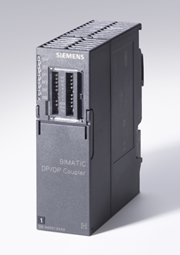SIMATIC DP (Decentralized Peripherals) is a communication protocol and system developed by Siemens for connecting and integrating field devices, such as sensors and actuators, in industrial automation applications. It provides a reliable and efficient means of communication between the central control system and distributed field devices.

Here are some key aspects of SIMATIC DP:
- Communication Protocol: SIMATIC DP is based on the PROFIBUS (Process Field Bus) communication standard. PROFIBUS is a widely used open fieldbus protocol in industrial automation, offering high-speed and deterministic communication.
- Network Topology: SIMATIC DP supports a variety of network topologies, including bus, star, and ring configurations. It allows for flexible deployment of field devices in a decentralized manner, ensuring efficient communication between devices and the central control system.
- Integration of Field Devices: SIMATIC DP enables seamless integration of various field devices, such as sensors, actuators, drives, and remote I/O modules, into the automation system. It provides standardized communication interfaces and protocols for these devices, allowing for easy configuration and control.
- Device Diagnostics: SIMATIC DP offers extensive device diagnostics capabilities. It allows for monitoring the status, health, and performance of field devices, facilitating proactive maintenance and troubleshooting.
- Scalability and Expansion: SIMATIC DP supports scalability, enabling the expansion of the automation system as the application requirements grow. It allows for the addition of more field devices and modules to the existing network, providing flexibility and adaptability.
- Integration with SIMATIC Systems: SIMATIC DP seamlessly integrates with other components of the SIMATIC system, including SIMATIC PLCs, HMIs, and SCADA systems. This allows for centralized control and monitoring of field devices through the automation system, streamlining operations and enhancing efficiency.
SIMATIC DP is widely used in industries such as manufacturing, process automation, and infrastructure, where the integration of field devices is essential. It enables reliable and efficient communication, data exchange, and control between the central control system and decentralized peripherals, contributing to optimized industrial processes and improved overall system performance.